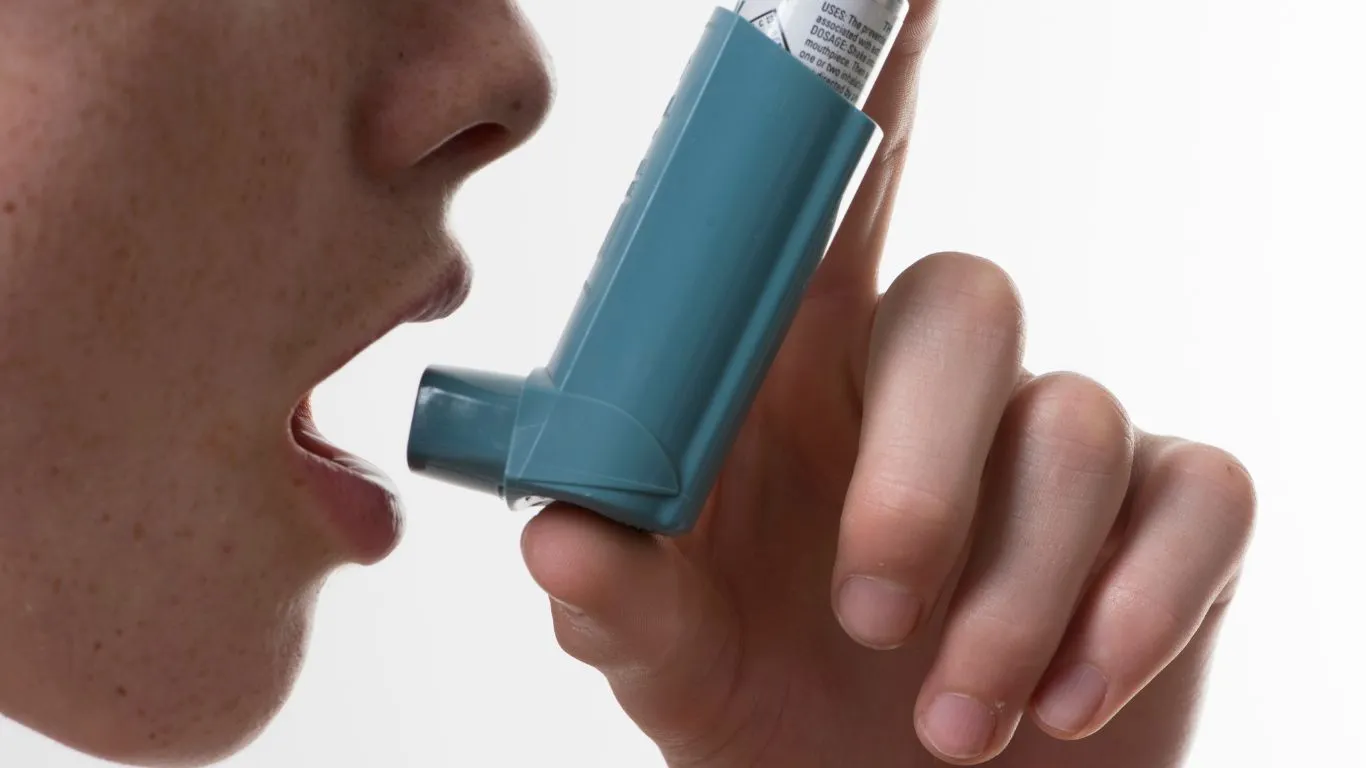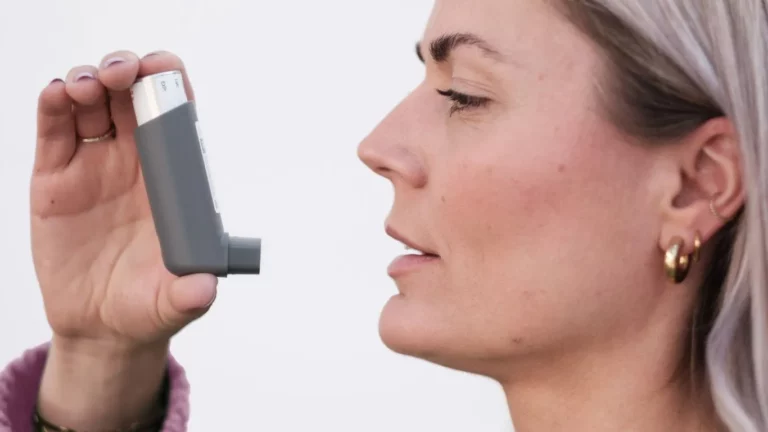Can Asthma Cause Cold-Like Symptoms? Uncover the Truth Now!
As a Pulmonary Nurse, I’ve seen firsthand the struggles that many patients with asthma face, and one of the most frequently asked questions I get is: *Can asthma cause cold-like symptoms?* It’s a valid concern, especially since some of the symptoms overlap so closely. You might wonder if what you’re feeling is just another cold or if asthma is causing your body to react differently. Understanding this can be tricky, but it’s crucial for managing your asthma effectively. Let me take you through the details, and hopefully, by the end of this, you’ll have a clearer picture of how asthma might mimic or even cause cold-like symptoms.
What Are Cold-Like Symptoms?
Before diving into the specifics of how asthma can cause cold-like symptoms, let’s first take a step back and understand what we mean by “cold-like symptoms.” When most of us catch a cold, we typically experience stuffy or runny noses, coughing, sneezing, sore throat, and general fatigue. These symptoms are often caused by viral infections that invade the upper respiratory tract.
But what happens when you’re dealing with asthma and you experience these same symptoms? Does that mean you have a cold, or could your asthma be triggering a similar response? Let’s break this down.

How Asthma Mimics Cold Symptoms
Asthma itself is a chronic condition where your airways become inflamed, making it difficult to breathe, especially during an asthma attack. However, there are certain scenarios where asthma can present symptoms that feel remarkably similar to a cold. For example, asthma can lead to:
- Coughing – This is probably the most common cold-like symptom linked to asthma. Asthma-related coughs often get worse at night or early in the morning and can be persistent.
- Runny or Stuffy Nose – Asthma is often associated with allergies, which can cause nasal congestion. This nasal congestion can mimic the symptoms of a cold, especially during the peak of allergy season.
- Shortness of Breath – While not typical for a cold, some asthma patients experience shortness of breath, which can sometimes be mistaken for the tight chest feeling you might have with a viral infection.
- Fatigue – Asthma flare-ups can be draining, leaving you feeling wiped out, much like the fatigue that comes with a cold.
While these symptoms overlap with a cold, the underlying cause is different. A cold is usually viral, while asthma symptoms are related to airway inflammation and sensitivity. It’s the inflammation in your airways that can cause the coughing, wheezing, and other symptoms that might feel cold-like.
When Asthma Gets Confused With a Cold
For many people, especially those who are not familiar with asthma, the line between asthma and a common cold can be blurry. If you have asthma and you start feeling congested, coughing, or wheezing, it can be easy to think you’re coming down with a cold. In fact, many people with asthma have had this exact experience!
Take it from me – over the years, I’ve seen patients come in thinking they’ve got a cold, but after assessing their asthma history, it turns out their asthma is simply acting up. The confusion can arise because both conditions share similar symptoms, but it’s essential to understand that asthma is a chronic condition, while colds are temporary infections.
The Role of Allergies in Asthma and Cold Symptoms
Another important aspect to consider is how allergies can play a significant role in both asthma and cold-like symptoms. Many asthma patients also suffer from allergic rhinitis, which is an inflammation of the nasal passages caused by allergens like pollen, dust mites, or pet dander. When allergens trigger an asthma attack, they can also cause symptoms that resemble a cold:
- Nasal congestion
- Postnasal drip – This can cause throat irritation, coughing, and a general feeling of sickness, much like what you experience with a cold.
- Watery eyes – While more of an allergy symptom, this can contribute to the feeling of being “under the weather.”
So, if you’re dealing with asthma and allergies simultaneously, your symptoms might very well mimic those of a cold. This is a common scenario, especially during the change of seasons when allergens are more prevalent. If you’re unsure whether you’re dealing with an asthma flare-up or a cold, your best bet is to track your symptoms and consult with a healthcare provider for an accurate diagnosis.
What to Do When Asthma Symptoms Feel Like a Cold
Now that you know asthma can cause cold-like symptoms, it’s important to understand how to manage these situations. As a Pulmonary Nurse, I always encourage patients to monitor their symptoms closely, as there are specific strategies that can help differentiate between a cold and an asthma flare-up.
Here are a few tips to consider:
- Track Your Symptoms – Pay attention to when your symptoms worsen. Asthma symptoms often flare up at specific times of the day (e.g., at night or early morning), or in response to triggers like allergens or exercise.
- Use Your Inhaler as Directed – If your asthma is well-managed with an inhaler, make sure you’re using it as directed. Inhalers can help reduce inflammation in your airways and alleviate some of the symptoms that mimic a cold.
- Stay Hydrated – Whether you have a cold or asthma symptoms, staying hydrated helps to keep your mucus thin, making it easier to breathe.
- Consult Your Doctor – If you’re unsure whether you’re dealing with a cold or an asthma issue, it’s always best to consult with a healthcare professional. They can help assess your symptoms and provide you with the most appropriate treatment options.

In conclusion, while asthma can certainly cause cold-like symptoms, it’s important to remember that asthma is a chronic condition that requires specific management. Understanding how asthma and colds can overlap will help you better recognize your symptoms and know when to seek medical attention. The more you understand your body’s signals, the better equipped you’ll be to handle these flare-ups!
Understanding the Difference: Asthma vs. Cold
If you’ve ever found yourself wondering whether your symptoms are due to asthma or a simple cold, you’re not alone. As a nurse who’s worked with a lot of asthma patients, I’ve had this conversation more times than I can count. The thing is, while both asthma and a cold can have similar symptoms—like coughing, nasal congestion, and fatigue—there’s a key difference: the underlying causes. Knowing this difference is crucial for proper management and treatment, and it can save you from unnecessary stress or trips to the doctor when you’re dealing with a flare-up.
Here’s where things can get a bit tricky. Asthma symptoms are more persistent than a cold, which tends to resolve within a few days. Asthma, on the other hand, is chronic, and you may experience symptoms off and on, even when you’re not actively battling a cold. The key takeaway here is that asthma doesn’t come from a virus or bacteria—it’s your airways reacting to certain triggers, whether that’s allergens, pollution, or even changes in the weather.

Identifying Asthma Symptoms More Clearly
Let’s take a moment to look deeper into asthma symptoms, especially the ones that overlap with cold-like symptoms. Over the years, I’ve heard countless patients describe their asthma attacks as feeling similar to a cold. In fact, many times people don’t realize that what they’re experiencing is actually an asthma flare-up, not a simple viral infection.
For example, when an asthma attack hits, you might feel a tightness in your chest, which can be similar to the congestion or pressure you feel when you’re coming down with a cold. However, asthma-related tightness is often more intense and can last much longer than the fleeting discomfort of a cold. Similarly, the coughing caused by asthma is typically dry or accompanied by wheezing, and it tends to persist for longer periods of time, particularly during the night or early morning.
Here are some asthma-specific symptoms to look out for:
- Wheezing – This high-pitched whistling sound when breathing, especially during exhalation, is one of the hallmark signs of asthma. It’s not typical of a common cold, and if you’re wheezing, it’s a good indicator that your asthma is flaring up.
- Difficulty Breathing – If you’re struggling to catch your breath or feeling winded even after minimal activity, it could be more than just a cold. Asthma causes inflammation in the airways, which makes it harder to move air in and out of your lungs.
- Prolonged Symptoms – Cold symptoms typically resolve after a week or so. But if you’re dealing with persistent symptoms like coughing, wheezing, or shortness of breath for weeks, it’s time to consider asthma as a culprit.
What Triggers Asthma Symptoms to Feel Like a Cold?
So, we’ve established that asthma can sometimes mimic cold-like symptoms. But what makes asthma flare up in the first place? If you’ve had asthma for a while, you probably already know that there are specific triggers that can make your symptoms worse. What’s surprising to some people is that these triggers can sometimes cause symptoms that feel a lot like a cold.
Here are some of the most common asthma triggers that could lead to cold-like symptoms:
- Allergens – Pollen, mold, dust, pet dander, and other allergens can cause asthma flare-ups. You might start coughing, sneezing, or experiencing a runny nose—symptoms that overlap with cold-like reactions.
- Weather Changes – Cold air, dry air, or even a sudden shift in temperature can irritate the airways, making asthma symptoms worse. This can feel a lot like the congestion and throat irritation you get with a cold.
- Viral Infections – While a virus won’t cause asthma, it can definitely trigger asthma symptoms. A cold or flu virus can aggravate your airways, leading to an asthma attack. If you’re already struggling with asthma, a simple cold could quickly escalate into something more serious.
- Physical Activity – Exercise-induced asthma is a common issue. Physical exertion can cause wheezing, shortness of breath, and coughing, which may be mistaken for the symptoms of a cold.

Why You Shouldn’t Ignore Asthma Symptoms That Feel Like a Cold
If your asthma symptoms feel like a cold, it’s easy to brush them off and wait for them to go away on their own. However, as someone who’s worked with countless asthma patients over the years, I can tell you that ignoring symptoms—even those that seem mild—can lead to bigger problems down the road. Asthma, if left untreated or poorly managed, can progress into more severe attacks, some of which can be life-threatening.
When asthma symptoms start feeling like a cold, it’s important to address them early. Even if you think it’s just a mild flare-up, it’s better to be cautious. You don’t want to end up struggling to breathe when an asthma attack intensifies. Trust me, I’ve seen that happen too many times, and it’s always better to act sooner rather than later.
As a nurse, I always recommend keeping a close eye on your asthma symptoms and using your rescue inhaler when necessary. If you find that your usual medications aren’t providing relief, it might be time to consult with your healthcare provider to adjust your treatment plan.
The Importance of Regular Asthma Monitoring
If you’re wondering how to stay on top of asthma flare-ups that resemble cold-like symptoms, regular monitoring is key. Over time, patients with asthma can learn to recognize the early signs of an asthma attack and take appropriate action before things get out of hand. This proactive approach can help prevent symptoms from worsening and avoid the need for emergency intervention.
Here are some ways you can stay on top of your asthma symptoms:
- Keep a symptom diary – Tracking your symptoms daily can help you identify patterns and triggers that lead to asthma flare-ups.
- Use a peak flow meter – This simple device measures how well air is moving in and out of your lungs. Monitoring your peak flow can help you spot early warning signs of an asthma attack.
- Stay on top of medications – Regularly taking your long-term asthma control medications can reduce the frequency of flare-ups and help keep symptoms in check.

By staying proactive and informed, you can better manage your asthma and avoid unnecessary discomfort when your symptoms start resembling a cold. Remember, the earlier you address asthma flare-ups, the easier they are to control. So, keep monitoring, stay on top of your medications, and don’t hesitate to consult your doctor if you’re ever unsure about your symptoms.
Managing Asthma Flare-Ups That Mimic Cold-Like Symptoms
By now, we’ve covered a lot about how asthma and cold symptoms can overlap, and how to distinguish between the two. But here’s the real challenge: managing asthma flare-ups when they feel like a cold. Trust me, as a nurse, I’ve seen how tricky it can be for patients to navigate flare-ups that don’t fit the typical asthma patterns. The good news is that with the right strategies in place, you can keep those symptoms under control and reduce the likelihood of them spiraling into something more severe.
When asthma symptoms feel like a cold, it can be tough to know what to do next. So, I always tell my patients that the key to managing these situations is staying calm and following a structured action plan. Below, I’ll walk you through a few practical tips to manage your asthma flare-ups and keep things from getting worse.

1. Keep Your Rescue Inhaler Close
If you’re someone with asthma, your rescue inhaler is your best friend. If you’re dealing with cold-like symptoms that feel more like an asthma flare-up than an actual cold, using your rescue inhaler can help alleviate wheezing, shortness of breath, and other discomforts. I always encourage my patients to have their inhalers with them at all times, even if they’re not feeling particularly symptomatic. The more prepared you are, the easier it will be to prevent an attack from escalating.
However, keep in mind that if you find yourself needing to use your rescue inhaler more frequently than usual, it could be a sign that your asthma is out of control. This is when it’s time to check in with your healthcare provider for a more thorough review of your treatment plan.
2. Adjust Your Medication as Needed
Many of my patients are often surprised to learn that asthma can require different medications based on how frequently symptoms occur. If your asthma flare-ups are becoming more frequent, especially with symptoms that mimic cold-like conditions, your medication regimen might need some tweaking.
There are two types of asthma medications: relievers (like your rescue inhaler) and controllers (like inhaled corticosteroids). If you find that your asthma symptoms are happening more often, it’s worth discussing with your doctor about possibly increasing the dose or frequency of your controller medication. This can help reduce inflammation in your airways and prevent flare-ups before they happen.
Additionally, there are medications that can help with allergies if that’s a trigger for your asthma. If allergens like pollen or dust are contributing to your cold-like symptoms, a daily antihistamine or nasal spray might help keep your asthma under control.
Recognizing and Avoiding Triggers
Knowing what triggers your asthma is one of the most important steps in managing it. Over the years, I’ve seen how different triggers—like allergens, weather changes, or even stress—can send asthma symptoms into overdrive. While avoiding triggers isn’t always possible, understanding what they are and how to minimize exposure can make a huge difference in preventing flare-ups.
Here are some common asthma triggers that can worsen cold-like symptoms:
- Allergens – Whether it’s pollen in the spring, dust mites in your home, or pet dander, allergens can cause nasal congestion, coughing, and other asthma-like symptoms. Consider using an air purifier, keeping windows closed, or even using allergy-friendly bedding to reduce exposure.
- Cold Air – Cold weather is one of the most common asthma triggers, especially for those with exercise-induced asthma. Wearing a scarf or mask over your nose and mouth when you go outside can help warm and moisten the air before it hits your lungs.
- Air Pollution – Pollution, whether from cars or industrial sources, can worsen asthma symptoms. Staying indoors during times of high pollution, or wearing a mask when you need to be outside, can help protect your airways.
- Viral Infections – As we mentioned earlier, viral infections like the flu or a cold can trigger asthma symptoms. If you’re already prone to asthma, it’s essential to take extra precautions during flu season—like getting a flu shot and avoiding sick individuals as much as possible.
3. Get Regular Check-ups
One of the most important things you can do for your asthma is to stay on top of regular check-ups with your doctor. Asthma is a condition that can change over time, so what worked for you a year ago might not be as effective today. I always advise my patients to schedule routine visits with their healthcare provider to monitor their asthma control and discuss any new symptoms or concerns.
During these visits, your doctor might adjust your medications, order breathing tests, or even provide you with a personalized asthma action plan. This plan is your roadmap for managing your asthma day-to-day, including instructions on how to adjust your medications based on your symptoms, and when to seek emergency help. Having this plan in hand can give you a sense of control and peace of mind when your asthma feels unpredictable.

Asthma and Colds: What to Do If They Mix
Now, let’s talk about what happens if you actually catch a cold while dealing with asthma. Unfortunately, this is something I’ve seen all too often. A common cold can exacerbate asthma symptoms, leading to an even greater challenge in managing both at the same time. If you’re dealing with a cold and asthma symptoms simultaneously, here’s what you can do to make it through:
- Stay Hydrated – Drinking plenty of fluids helps keep mucus thin and easier to expel. This can relieve congestion and make breathing a little easier.
- Rest – If you’re feeling under the weather with a cold, rest is critical. Your body needs time to recover, and pushing yourself too hard can worsen your asthma symptoms.
- Monitor Your Symptoms – Keep an eye on both your asthma and cold symptoms. If your asthma symptoms worsen, use your inhaler or follow your asthma action plan. If the cold symptoms become severe, consult with your doctor to rule out any complications.
Conclusion: Asthma Doesn’t Have to Hold You Back
Managing asthma symptoms that resemble cold-like symptoms can be tricky, but with the right tools and knowledge, you can stay on top of things. Remember to keep your medications up to date, avoid known triggers, and regularly check in with your doctor to ensure your asthma is well-controlled. The key to living well with asthma is understanding how it works, knowing what to do when symptoms arise, and taking proactive steps to prevent flare-ups before they occur.
If you’re struggling to tell the difference between asthma and a cold, don’t hesitate to reach out to your healthcare provider. They’re the best resource for diagnosing and treating both asthma and cold-related symptoms. The sooner you address your symptoms, the easier they are to manage!
For more information on asthma management and general health, you can visit trusted sources like NIH and Health.com.
Disclaimer: The information provided in this article is intended for general informational purposes and is not a substitute for professional medical advice, diagnosis, or treatment. Always seek the advice of your physician or another qualified health provider with any questions you may have regarding a medical condition.

Bianca Nala is a compassionate Nurse Practitioner with a strong background in primary and respiratory care. As a health writer for Healthusias.com, she combines her clinical expertise with a talent for clear, relatable storytelling to help readers better understand their health. Bianca focuses on topics like asthma, COPD, chronic cough, and overall lung health, aiming to simplify complex medical topics without losing accuracy. Whether she’s treating patients or writing articles, Bianca is driven by a single goal: making quality healthcare knowledge accessible to everyone.






